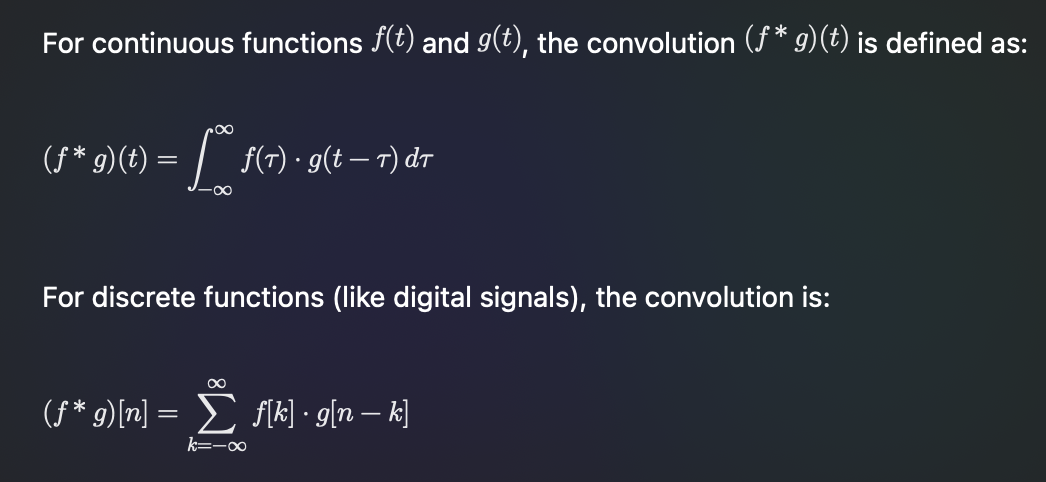What is it in context of CNN?
Understanding Convolution: The Basics Explained
Convolution is a fundamental mathematical operation used in various fields like mathematics, engineering, physics, and computer science. At its core, convolution combines two functions to produce a third function that expresses how the shape of one is modified by the other.
What Is Convolution?
In simple terms, convolution measures how much two functions overlap as one is shifted over the other. Imagine sliding one shape over another and calculating the area of overlap at each position—that’s essentially what convolution does.
Mathematical Definition

Why Is Convolution Important?
• Signal Processing: Convolution is used to filter signals, remove noise, and detect features.
• Image Processing: It’s applied to blur, sharpen, and detect edges in images.
• Engineering: Helps in analyzing systems’ responses to different inputs.
• Machine Learning: Essential in convolutional neural networks (CNNs) for feature extraction.
Convolution in Neural Networks
In the context of Convolutional Neural Networks (CNNs):
• Filters/Kernels: Small matrices that scan over input data (like images) to detect patterns.
• Feature Maps: The result of convolution operations, highlighting important features.
• Efficiency: Reduces the number of parameters, making models faster and less prone to overfitting.
Real-World Example
• Edge Detection in Images:
• A filter designed to detect vertical edges scans over an image.
• At each position, it performs convolution by multiplying and summing the overlapping pixels.
• The result is a new image highlighting vertical edges.
Key Takeaways
• Convolution combines two functions to produce a new one, showing how one modifies the other.
• It’s a crucial tool in processing and analyzing signals and images.
• In AI, convolution helps models learn important features from data efficiently.
Have more questions about convolution or how it’s used in AI? Feel free to ask!